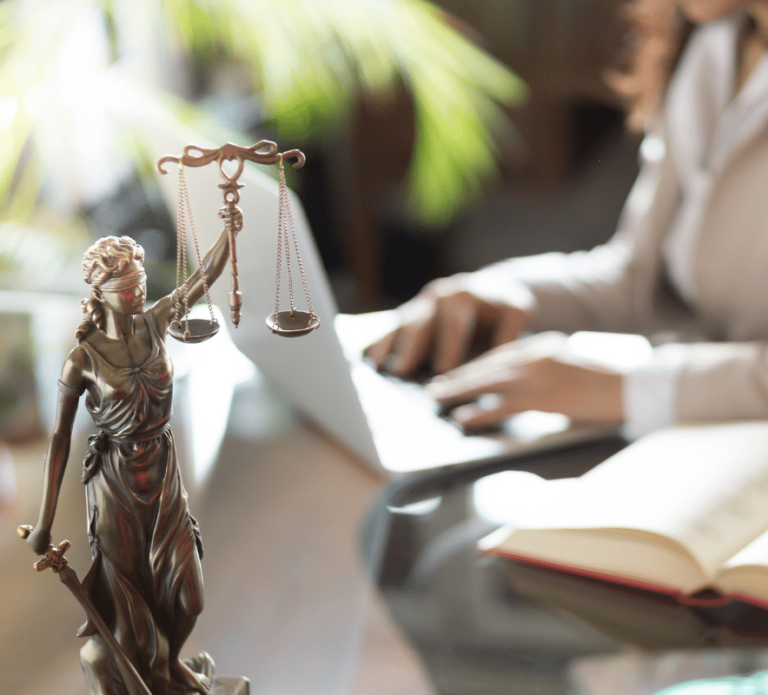What is an NDA in a relationship?
If you have been asked to or already signed an NDA in a relationship - it is important to understand what this means and if you can break the NDA for the protection of yourself and others.



Author: Kathryn Kosmides
Survivor Advocate
- The general purpose of a NDA in a relationship is to protect private information from being shared with other parties, the media, or people. However, some individuals will use NDAsin relationships to try and silence or stop an individual from speaking out against them for illegal or harmful behavior.
- If someone requests you sign an NDA in a relationship, you should have this reviewed by a lawyer and fully understand what you are consenting to.
- You can break an NDA in a relationship for a variety of reasons, including if you witness or experience a crime such as domestic violence or sexual assault. Generally, the only consequences of breaking an NDA are within the civil courts and a court order is required to enforce the action.
What is an NDA in a relationship?
An NDA generally refers to a legally binding document called a “non-disclosure agreement”. A non-disclosure agreement is a document that establishes a confidential relationship between two parties.
A non-disclosure agreement can be:
- Non-Mutual or One-Party Agreement: The NDA protects the person sharing the confidential information if the person receiving that information violates the NDA.
- Mutual Agreement: The NDA protects both parties in sharing and receiving information should the other violate the agreement.
Sometimes this term is interchangeably used to describe a “non-disparagement agreement” but most of the time a non-disclosure agreement will have a non-disparagement clause within the document along with other terms and stipulations.
The general purpose of a NDA in a relationship is to protect private information from being shared with other parties, the media, or people.
Celebrities may have others around them sign NDAs to protect themselves, their ideas, and their businesses.
However, if you are not a celebrity or influencer, and someone asks you to sign an NDA in a relationship, whether you are going on a first date or entering a long-term committed relationship, this can be a major red flag.
Why?
Healthy relationships are built on trust and communication. An NDA in a relationship can mean many things – including that the individual requesting the document may be trying to ensure you can’t speak out against them, their businesses, or their associates, should they cause harm to you or others.
- What is Sexual Assault?
- What is Sexual Assault in the First Degree?
- What is Sexual Assault in the Second Degree?
- What is Sexual Assault in the Third Degree?
- What is Sexual Assault in the Fourth Degree?
- What is Rape?
- What is Rape in the First Degree?
- What is Rape in the Second Degree?
- What is Rape in the Third Degree?
- How to Report Sexual Assault
- How Long Does a Victim Have to Press Charges?
- Can I file a Sexual Assault Lawsuit?
Why someone might request an NDA in a relationship
Not every person who requests an NDA in a relationship is doing so for potentially nefarious reasons. A recent article in The Cut titled “Hush-Hush Affair How the NDA became the defining legal document of our time” explores the nuances and fast-paced growth of NDAs outside of the workplace: from friends to lovers to viewing a new movie before its released, and everywhere in between, NDAs seem to be a growing request in all forms of relationships.
We’re focused on NDAs in relationships in this piece: meaning romantic relationships (although platonic friendship NDAs may also likely have the same concerns).
So… why would someone ask you to sign an NDA in a relationship?
- They want to protect business information: If you are dating someone, chances are you may get to know private information related to their business operations such as when they’re releasing a new product. An NDA in a relationship may be brought up under these contexts of wanting to protect their business – and, oftentimes, this may be phrased as their business partner or lawyer wants you to sign the agreement – not necessarily them (so they don’t look like the bad person asking you to sign a legal document).
- They want to protect themselves: If you’re dating someone, you also likely get to know someone rather intimately such as they’re drinking or drug habits, their potentially dysfunctional families, and beyond. A celebrity or business person may have a lot to lose if someone gets angry at them and goes to the press about these things – an NDA in a relationship can help prevent this.
- They want to cause harm: Individuals who want to cause harm to you or others around them will often use NDAs in relationships to try and prevent others from speaking up or reporting their abuse or harms to the police. Harvey Weinstein, P. Diddy, and many other celebrities accused of sexual abuse have allegedly used NDAs to try and prevent their harms from becoming public.
If someone asks you to sign an NDA in a relationship, it’s important to know what you’re agreeing to. Ideally, you would take the document to a lawyer and have them go over every detail with you so you are fully aware of each clause and the potential consequences if you choose to break the non-disclosure agreement.
However, celebrities and other wealthy individuals, often target those with less power and money if they want to cause harm as they know they will not have the money to hire an attorney – whether to review the NDA or to represent them should they potentially violate the agreement.
So, we’re going to discuss the main agreements in an NDA, if and when you can legally break an NDA, the potential consequences for breaking a non-disclosure agreement, and your legal rights and options if you witness harm or potential crimes in a relationship when an NDA is in place.
We are here to listen and advocate for you.

Major Sections in a Relationship NDA & What They Can Mean
While every NDA is different – there are generally some clauses or sections that are standard within an NDA. These can be the most important details to be aware of when determining if you should sign an NDA in a relationship.
- Mutual or Non-Mutual: A non-mutual agreement is designed to only protect the individual who requested and created the document. A mutual agreement can protect both parties who share and receive information. In general, be very cautious of signing a non-mutual NDA in a relationship.
- Time Period: A non-disclosure agreement generally contains a time period that the NDA covers which can be anywhere from one year to forever – including even if the individual passes away or the relationship ends. You should likely never sign a lifetime NDA in a relationship and be very cautious about any time limit beyond one year if you do choose to sign one.
- Identified Parties: Also known as “parties to the agreement”, this section identifies the people and/or entities involved in the agreement including the disclosing party and the recipient if it is a non-mutual agreement. In relationship NDAs, the individual and yourself will be parties but it may also include businesses, affiliates, and others. You should always know who every single identified party is and their relationship to the individual.
- Scope & Definitions: Most NDAs will contain a large section related to definitions of the different types of information covered by the NDA and establish rules regarding how this information is handled. In general, an NDA is not enforceable over very broad claims like “proprietary information” so this section should define exactly what type of information is covered under the relationship NDA.
- Obligations: What happens if protected information is disclosed (aka the NDA is violated)? This section outlines the expected conduct for each party but also specifies the consequences for violating the agreement. In general, the only consequences for violating an NDA are civil and must be proven in a civil court of law. While someone can say that you owe them $100,000 if you violate the NDA, generally the only way they can truly collect this is through a court order. It is never recommended to pay an NDA violation without speaking to an attorney and without a court order or other legal document related to the violation drafted by an attorney that represents you.
- Exclusions or Inclusions: Also known as carve-outs or carve-ins, these sections detail what may or may not be included or excluded beyond the broad terms. For example, a relationship NDA may have a carve out that you’re allowed to talk to a therapist or your family but it may also have a carve-in that you can not talk to a certain person or people like friends.
Major Relationship NDA Red Flags:
- They use a template: If they used a free or paid online relationship NDA template this is likely not an agreement made in good faith (you can search the text of NDA online in major sections to help identify this)
- They do not have a lawyer: If they don’t have a lawyer you can ask questions to (you should have questions and your own requests for the agreement) and if they do not have a lawyer representing them, this is a major red flag as they don’t legally know what they’re doing and can’t accurately or factually answer your questions or concerns!
- They don’t let you negotiate: An NDA is an agreement between two or more parties – if they do not let you negotiate the terms such as the time period covered, your ability to talk to friends or specific people about things, or anything else you find you disagree with, then this is not an agreement. When you review any agreement, generally you do something known as “contract redlining” which is editing and negotiating a contract.
- There is no benefit to you: An NDA is a contract – and contracts must have an exchange of relevant value in order to be enforceable. For example, a company may request an NDA for seeing a movie early and that is the exchange of value. If you sign an NDA, there must be an exchange of value which could be money or a mutual NDA agreement or anything that is defined by you. A relationship with someone is not a benefit in itself (although they might try to tell you it is!).
- If they threaten you: Whether before signing or after, if they threaten you or make derogatory remarks related to the signing or not signing of the document, this is a major red flag. An NDA should never be used as a threat – it is meant to be a shield not a sword.
There are more red flags that can be in relationship NDAs and, generally, unless you are on the same footing with the person it doesn’t make sense to sign an NDA. Additionally, a respectable person should pay for you to hire an attorney to review the NDA to ensure you understand the terms if they’re really about equality and having a healthy relationship.
Prior to hiring an attorney, you can also use AI to help you get a high-level understanding of the contents within the NDA. For example, you can input different sections of the NDA into ChatGPT and ask for it to explain to you what the section means in plain words. While you can not fully trust any AI or non-expert to provide legal advice, you can likely get a general understanding or come up with questions to ask an attorney about the agreement.
Otherwise, an NDA in a relationship can create an unequal power balance in a relationship that can result in the protected person thinking they can get away with anything.
Can You Break an NDA in a Relationship?
Yes, you can break an NDA in a relationship.
In general, you can break an NDA in a relationship for any reason – it is just whether or not there will be potential consequences as outlined in the agreement. Additionally, it is generally not a crime to break an NDA and you can not be criminally charged.
NDAs are generally very difficult to legally enforce and can only technically be enforced through filing a civil lawsuit.
Anyone can threaten you for breaking an NDA all they want – but without a court order, you technically do not have to abide by the obligations outlined in the agreement for breaking the non-disclosure agreement.
While you should always enter any agreement in good faith, you should also never experience or witness a crime and feel you can not protect yourself or others.
You are generally well within your legal rights to break an NDA if you experience or witness a crime. For example, if the person you signed the NDA sexually or physically assaults you, you can break the NDA including, but not limited to, reporting to law enforcement or seeking an order of protection against the individual.
You should speak to a lawyer or trained advocate at a hotline as soon as possible if you are thinking about breaking an NDA to understand your legal rights and options.
Helping Survivors works with a variety of law firms and can connect you with someone to provide a free consultation if you signed an NDA and believe you experienced or witnessed a crime.
While a lot of people threaten to sue – most people will not given the high costs of litigation and the discovery process.
While filing a civil lawsuit is inexpensive, the legal process can be costly, and potentially reveal damaging information about the parties involved. During discovery, both sides must disclose relevant evidence, such as incriminating photos, videos, texts, emails, and other documents, which they likely prefer to keep private and outside of the view of the legal system.
Whether you should sign an NDA in a relationship is a personal decision – but it should be one that you make with informed and complete consent.
Want To Speak With A Lawyer?




